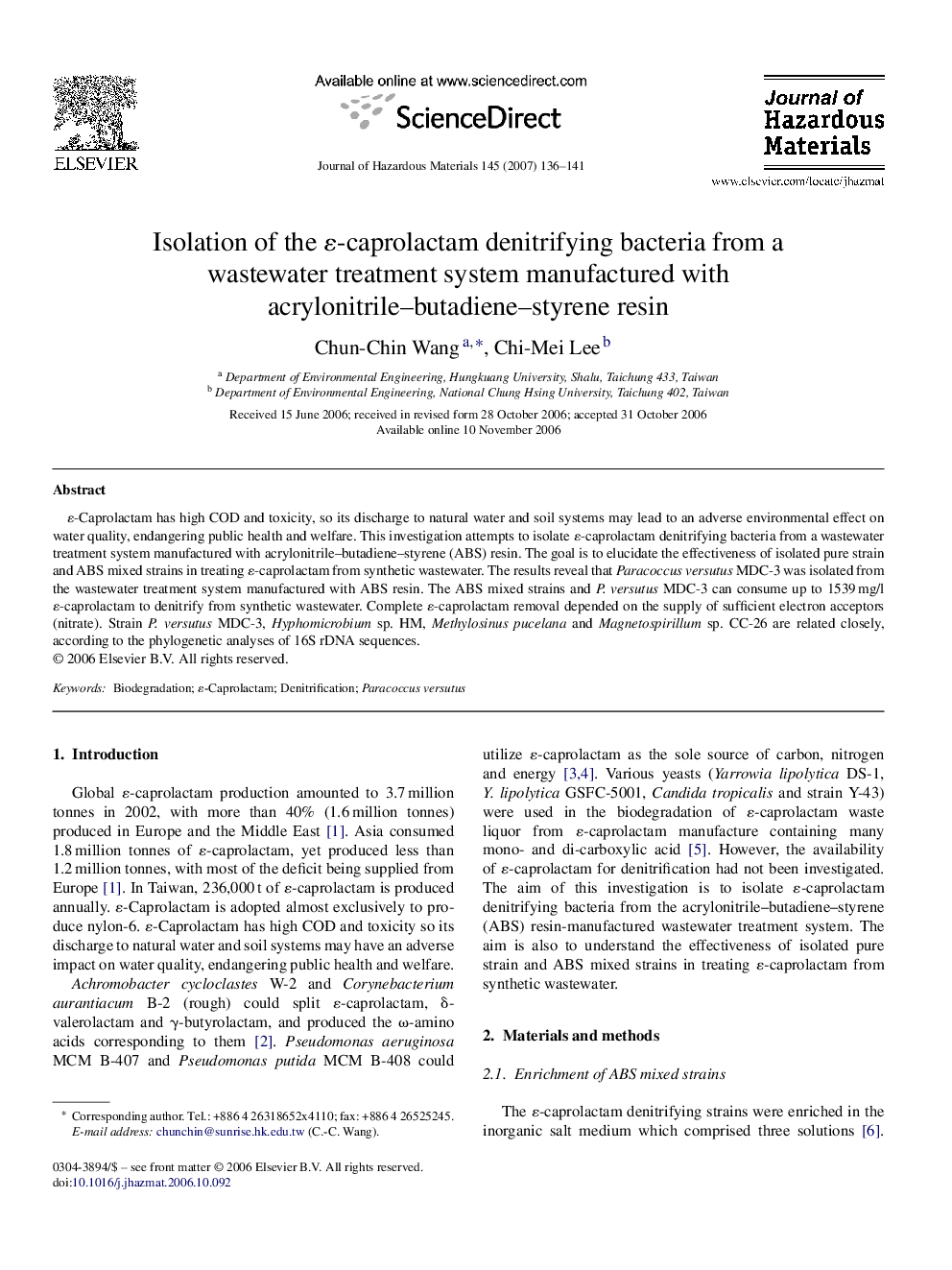| Article ID | Journal | Published Year | Pages | File Type |
|---|---|---|---|---|
| 584236 | Journal of Hazardous Materials | 2007 | 6 Pages |
Abstract
É-Caprolactam has high COD and toxicity, so its discharge to natural water and soil systems may lead to an adverse environmental effect on water quality, endangering public health and welfare. This investigation attempts to isolate É-caprolactam denitrifying bacteria from a wastewater treatment system manufactured with acrylonitrile-butadiene-styrene (ABS) resin. The goal is to elucidate the effectiveness of isolated pure strain and ABS mixed strains in treating É-caprolactam from synthetic wastewater. The results reveal that Paracoccus versutus MDC-3 was isolated from the wastewater treatment system manufactured with ABS resin. The ABS mixed strains and P. versutus MDC-3 can consume up to 1539Â mg/l É-caprolactam to denitrify from synthetic wastewater. Complete É-caprolactam removal depended on the supply of sufficient electron acceptors (nitrate). Strain P. versutus MDC-3, Hyphomicrobium sp. HM, Methylosinus pucelana and Magnetospirillum sp. CC-26 are related closely, according to the phylogenetic analyses of 16S rDNA sequences.
Related Topics
Physical Sciences and Engineering
Chemical Engineering
Chemical Health and Safety
Authors
Chun-Chin Wang, Chi-Mei Lee,
